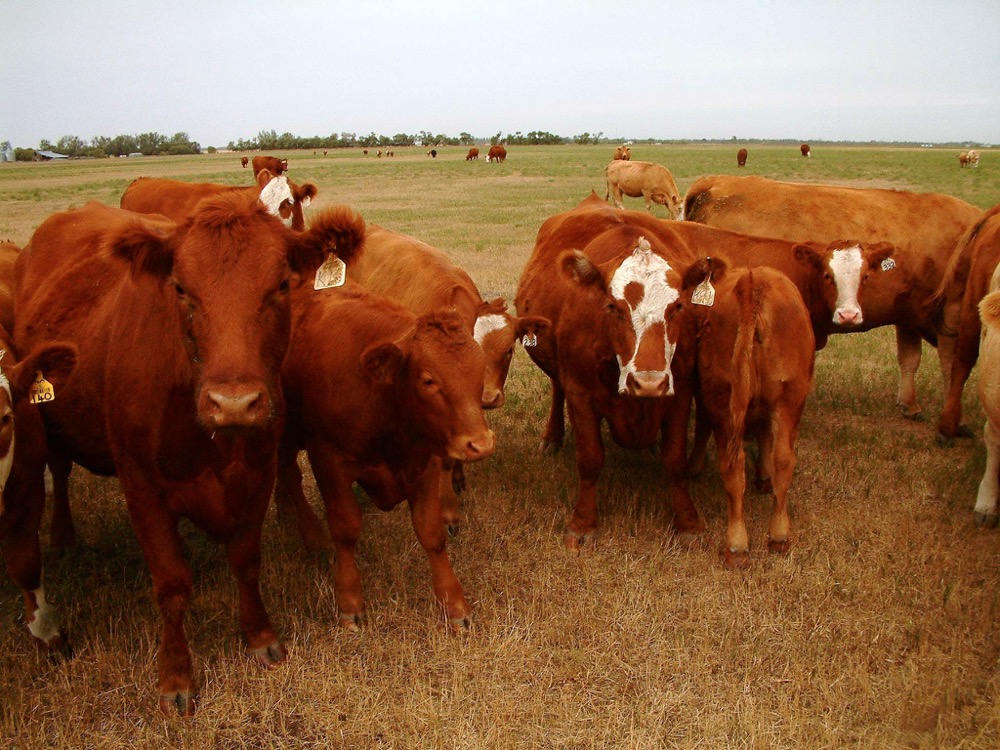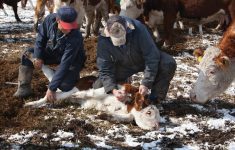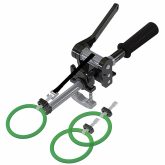With today’s tightening controls on residues in meat and milk, we as members of the animal agriculture industry must have the utmost responsibility about how we treat our livestock in general. Proper production practices benefit our verified beef production system and with antibiotic resistance increasing producers must be prudent in the use of antibiotics and other drugs involved with livestock production.
With the help of your veterinarian, consider areas where for the size of your operation the proportion of certain products used might seem excessive. Perhaps changes to management, feeding programs or prevention measures such as vaccination, proper nutrition and deworming will all help reduce the use antibiotics. Healthy, low-stress cattle provided with good nutrition develop healthy immune systems and are less likely to get sick.
Read Also

Harvest wraps up and fall work begins
At the Eppich famly ranch in western Saskatchewan, the fall harvest was successful with few breakdowns, cows and calves have been sorted and a new tractor has arrived
More isn’t better
If you do need to treat, your veterinarian can provide professional advice on the best product and dosage for the job. Drugs have all been formulated and the dosage tested for the optimal response. Realize that more is not better. This only increases the cost, lengthens the withdrawal period and produces no better results.
Stacking drugs only works if they operate synergistically with one another. Often they will work antagonistically and you get less response then say if one antibiotic was used by itself.
In treating conditions such as injuries sprains or strains, some producers feel the need to give the animal something, often antibiotics. With many of these foot and leg injuries, time to convalesce is what is most needed. Painkillers can be given if in your or the veterinarian’s judgment they are necessary. If animals keep eating they keep healthy and are quite able to heal.
Depending on the extent of the injury, an experienced vet will give you an idea of prognosis and time needed for convalescence. Pain killers may facilitate walking on an already-injured area and worsen the condition. Use all painkillers with caution. Without these products you truly can see if the condition is improving.
Know the problem
Very few foot rots are actually that. Many are injuries or conditions related to hoof cracks, arthritis or laminitis. Some of these need hoof care which is why preventative trimming especially in herd bulls or cows with bad feet eliminate a lot of treatments for lameness.
A product applied to the local area is better than systemic products. The two best examples are mastitis and pinkeye. If the cow is not sick, mastitis responds well to stripping out milk and applying specific mastitis tubes up the infected quarters. This provides the maximal level of antibiotics where it is needed most.
Pinkeye responds just as well to a low dose of penicillin injected into the conjunctiva around the eye than systemic injections of tetracyclines. The convenience factor when using different products is often the deciding factor. When injecting the eyes you need good restraint and the head immobilized with a halter. If practiced the level of antibiotic used is greatly decreased.
A common mistake with pinkeye is to treat long after the infection is healed. Once the eye stops running and you see the whiteness develop, the infection has been cleared. The white is the resulting scar and may take a long time to get smaller. Some remain permanently so further treatment is not necessary.
Producers must recognize some conditions such as lumpy jaw, navel infection and other injuries and abscesses may remain as a blemish for the life of the animal. No amount of antibiotic treatment will resolve the situation.
In treating lumpy jaw, the object is to stop the infection and the large lump will remain. As long as the condition is not worsening the infection has been stopped. If large enough, abscesses need to be lanced as drugs won’t penetrate the capsule that surrounds them. Navel infections often leave the scarred navel stump and may even have a slight permanent discharge. Scarred areas or areas where cartilage is present (such as the voicebox) have poor blood supply so antibiotics can’t penetrate these areas either. It is often pointless to treat these conditions.
Read the label
Wherever possible, use antibiotics that have on their label the conditions you are treating. The pharmaceutical companies have tested them against the organisms causing these diseases and found them effective.
You may, in some cases, find the older family of drugs such as the penicillins or tetracyclines equally as effective as the newer more potent and expensive drugs. Save the big guns for the severe pneumonias and diarrheas where specific products are necessary.
Approach treatment under the direction of your veterinarian, as he/she will know the best choice taking into account severity, type of organism and geographic location. They may even recommend a culture and sensitivity. This is where the organism is grown in a lab and the effectiveness of individual drugs are measured against it. You are then treating specifically with the product that “should” work the best.
Remember antibiotics don’t work against viruses. The newer macrolide family of antibiotics such as Zuprevo and Draxxin and others are very big molecules with built-in mechanisms to eliminate resistance.
Vaccination is the number one prevention treatment for anyone concerned about biosecurity. Some producers, however, get overzealous and vaccinate for diseases cattle are either unlikely to get, have no consequence, or the efficacy of the vaccine is poor.
Veterinarians will select the right combination of products for your farm. They can recommend competitively priced products, and will shy away from products they know are unnecessary or poor quality. Heed their advice. You may find over vaccination is being practiced. Anthrax puts fear in producer’s eyes but if you are a long ways from any infected herds it may not be prudent to vaccinate. This is for you and your veterinarian to work out. If there is no chance of recovery as with chronic arthritic infections consider humane issue. Have the animal put down and an autopsy performed if you need to clarify the condition, or send the animal for salvage slaughter if possible. By following some of these recommendations we will all cut down drug usage somewhat and our herds will be just as healthy. We will save some money and time in the process plus it will be much easier to comply with Beef Quality Assurance principles.















